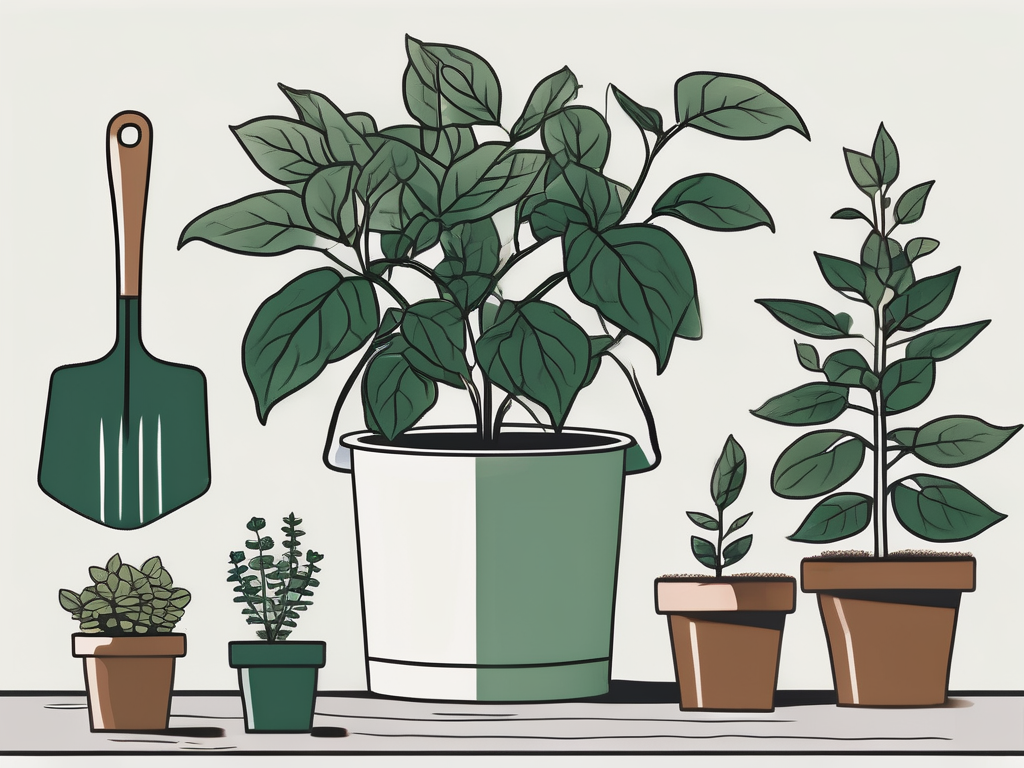
Propagating Cyclamen in water might sound a bit unconventional, but trust me, it’s a rewarding endeavor that can bring a little extra greenery into your life. Cyclamen, known for their vibrant blooms and heart-shaped leaves, are typically propagated through tubers. But have you ever thought about taking the plunge and trying to root them in water?
In this article, we’ll walk through the steps of propagating Cyclamen in water, share some handy tips and tricks, and explore how water propagation can add a fresh twist to your plant care routine. Whether you’re a seasoned plant parent or just starting your green journey, there’s something here for everyone.
Understanding Cyclamen: A Quick Overview
Before we get our hands wet, let's take a moment to appreciate what makes Cyclamen so special. These charming plants are native to Europe and the Mediterranean region, and they thrive in cooler climates. With their striking flowers and lush foliage, they’re a popular choice for both indoor and outdoor gardens.
Cyclamen are winter bloomers, often gracing us with their presence during the colder months when other plants have gone dormant. This makes them an excellent choice for adding a splash of color to your home during the dreary winter days. And while they may seem delicate, Cyclamen are surprisingly resilient, making them a favorite among plant lovers who want something both beautiful and easy to care for.
Why Choose Water Propagation?
So, why would you want to propagate Cyclamen in water? Well, there are a few great reasons to give this method a try:
- Visibility: Watching roots grow in water is like having a front-row seat to the magic of nature. It’s fascinating to see the progress day by day.
- Hydration Control: With water propagation, you have complete control over the moisture levels, reducing the risk of overwatering or underwatering your cuttings.
- Space-Saving: Water propagation requires minimal space, making it ideal for those with limited room for pots and soil.
While traditional soil propagation is a tried-and-true method, water propagation offers a unique and interactive way to engage with your plants. Plus, it's perfect for those who love a little experiment in their plant care routine.
Gathering Your Materials
To start your water propagation journey, you’ll need a few basic materials. Don’t worry, you probably have most of these items on hand:
- Healthy Cyclamen Plant: Choose a plant that’s robust and free from pests or diseases.
- Clean, Sharp Scissors or Pruning Shears: A clean cut is crucial to prevent infection and promote healthy growth.
- Glass Jar or Container: Transparent containers are best, as they allow you to monitor root development.
- Filtered or Distilled Water: Tap water can contain chlorine and other chemicals that might harm your cuttings, so it’s best to use filtered or distilled water.
Once you’ve gathered your materials, you’re ready to move on to the fun part—preparing your Cyclamen for water propagation!
Preparing Your Cyclamen for Propagation
Now that you have all your materials, it’s time to get your Cyclamen ready for its new aquatic adventure. Here’s what you’ll need to do:
- Select a Healthy Leaf: Look for a mature, healthy leaf that’s free from blemishes or signs of disease. A strong, vibrant leaf will give your propagation efforts the best chance of success.
- Cut the Leaf: Using your clean scissors or pruning shears, cut the leaf from the main plant. Make sure to include a portion of the stem, as this is where the roots will develop.
- Trim the Stem: Trim the stem to about 2-3 inches in length. This helps ensure that the leaf will sit nicely in your container without toppling over.
Once you have your leaf ready, you’re all set to move on to the actual planting process. Remember, a little patience goes a long way here, so don’t rush through these steps.
Setting Up Your Water Propagation
With your leaf prepared, it’s time to set up your water propagation station. Here’s how to do it:
- Fill Your Container: Pour enough filtered or distilled water into your container to cover the stem of your Cyclamen leaf. Be careful not to submerge the entire leaf, as this can lead to rot.
- Position the Leaf: Gently place the leaf in the water, ensuring the stem is fully submerged while the leaf itself remains above the waterline. You might need to adjust the leaf a bit to get it to sit just right.
- Find the Right Spot: Place your container in a spot that receives bright, indirect light. Avoid direct sunlight, as it can cause the water to heat up and harm your cutting.
And there you have it! Your Cyclamen is now set up for water propagation. Keep an eye on the water level, and be sure to top it off as needed to keep the stem submerged.
Monitoring and Maintaining Your Propagation
Now that your Cyclamen is comfortably soaking in its new watery home, it’s time to switch gears and focus on monitoring and maintenance. Here’s how to keep your cutting happy and healthy:
- Change the Water Regularly: Replace the water every week or so to prevent bacterial buildup and keep it fresh.
- Watch for Root Development: After a few weeks, you should start to see roots forming. This is an exciting stage, as it means your propagation is on the right track!
- Check for Signs of Trouble: Keep an eye out for any signs of rot or disease. If the leaf starts to look unhealthy, it might be time to start over with a new cutting.
Patience is key during this stage. While it might take a few weeks for roots to really take off, the end result is well worth the wait.
Transferring Your Cyclamen to Soil
Once your Cyclamen has developed a robust root system, it’s time to think about transferring it to soil. Here’s how to make the transition as smooth as possible:
- Prepare a Pot: Choose a pot with good drainage and fill it with a well-draining potting mix. Cyclamen prefer a light, airy soil that mimics their natural environment.
- Gently Transfer the Cutting: Carefully remove the cutting from the water and place it in the center of the pot. Cover the roots with soil, but be sure not to bury the leaf itself.
- Water Thoroughly: Water the soil until it’s evenly moist, but not soggy. This helps the roots settle into their new home and reduces transplant shock.
Congratulations, your Cyclamen has successfully made the leap from water to soil! With a little care and attention, it will continue to grow and thrive in its new environment.
Common Mistakes and How to Avoid Them
Even the best plant parents can run into a few hiccups along the way. Here are some common mistakes to watch out for when propagating Cyclamen in water, along with tips on how to avoid them:
- Submerging the Leaf: It’s important to keep the leaf above the waterline to prevent rot. If you notice any sogginess, adjust the leaf’s position to ensure only the stem is submerged.
- Not Changing the Water: Stagnant water can lead to bacterial growth, so make sure to change it regularly to keep your cutting healthy.
- Using Tap Water: The chemicals in tap water can be harmful to your cutting, so stick to filtered or distilled water for the best results.
- Too Much Sunlight: Direct sunlight can heat up the water and cause stress to the cutting. Keep your setup in a spot with bright, indirect light instead.
By avoiding these common pitfalls, you’ll increase your chances of success and give your Cyclamen the best possible start in life.
Benefits of Water Propagation for Cyclamen
Water propagation isn’t just a fun experiment—it also comes with a range of benefits that can make it a great choice for Cyclamen lovers. Here are a few reasons why you might want to give it a try:
- Encourages Healthy Root Growth: Water propagation allows you to monitor root development closely, helping you catch any issues early on.
- Less Mess: Since there’s no soil involved, water propagation is a cleaner process with less mess to clean up.
- Low-Cost: All you need is a container and some water, making it an affordable option for anyone looking to expand their plant collection.
Plus, there’s something truly magical about watching your Cyclamen roots grow right before your eyes. It’s a wonderful way to connect with your plants and witness the wonders of nature up close.
Creating a Plant-Filled Space with Propagated Cyclamen
Once your Cyclamen has been successfully propagated and transferred to soil, it’s time to think about how to incorporate it into your living space. Here are a few ideas to help you create a plant-filled sanctuary:
- Group with Other Plants: Cyclamen pair beautifully with other indoor plants like ferns and ivy. Create a lush, layered look by grouping different plants together.
- Use Decorative Containers: Choose pots and containers that complement your home’s decor. This adds an extra layer of style to your plant displays.
- Experiment with Placement: Cyclamen thrive in bright, indirect light, so get creative with their placement. Try them on a windowsill, a bookshelf, or even as a centerpiece on your dining table.
With a little creativity, you can transform your home into a green oasis that’s both beautiful and inviting.
Sharing Your Propagation Success with Others
Finally, why not share your Cyclamen propagation success with friends and family? Here are a few ways to spread the plant love:
- Gift a Propagated Plant: Once your Cyclamen is established, consider gifting it to a friend or loved one. It’s a thoughtful and personal gift that’s sure to be appreciated.
- Host a Plant Swap: Organize a plant swap with fellow plant lovers. It’s a fun way to exchange cuttings and expand your collection.
- Share on Social Media: Document your propagation journey on social media. Not only does this inspire others, but it also connects you with a community of plant people who share your passion.
Sharing your love of plants with others is a great way to connect and inspire, bringing a little more greenery into the world one Cyclamen at a time.
Final Thoughts
In this article, we've explored the fascinating process of propagating Cyclamen in water, from the initial setup to transferring your plant to soil. With patience and care, you can enjoy the beauty of Cyclamen blooms and the satisfaction of nurturing your plant from the start.
At Cafe Planta, we believe that plants have the power to bring people together and inspire us to connect with nature and each other. Whether you're an experienced plant parent or just starting out on your plant journey, we're excited to share our love of plants with you and help you create a beautiful, thriving plant collection in your home. If you have any questions about plant care, feel free to email us or DM us on Instagram.












